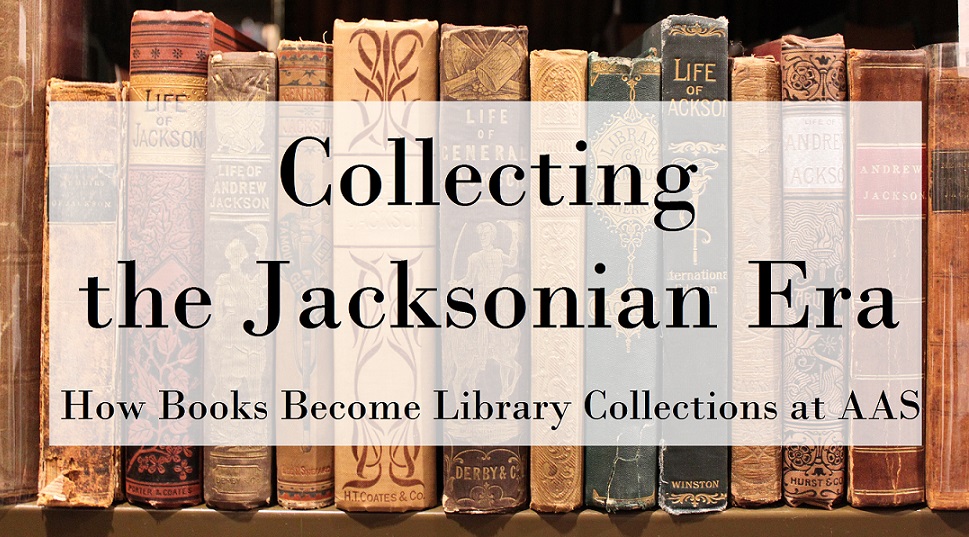How Books Become Library Collections
n old book currently gathering dust in your attic could someday grace the shelves of a research library, but how?
The public rarely get to peek behind the doors into the dark stacks of shelving where the magic—or more accurately, the hard work—of building a special collections research library happens. This exhibition explains the collection building process at one specific library (the American Antiquarian Society) using examples from one recently donated collection (the William C. Cook Jacksonian Era Collection) to illustrate how books are integrated into a research library’s collections.
The collection building process usually proceeds something like this:
Historical material is created and is saved
↓
Collectors (or booksellers or eBay vendors) amass books
↓
Curators decide a library should acquire the books
↓
Acquisitions staff track the books and pay for purchases
↓
Conservators review and provide any necessary treatments; books are housed and shelved in climate-controlled stacks
↓
Catalogers describe the books in online records
↓
Digitizers may photograph the books and make the images available online
↓
Researchers request books, helped by readers' services staff
↓
History is written, art is created, students are taught, etc.
N.B.: What is presented here is a simplified and streamlined version of what is a complex and interconnected process in real life. A visual depiction of the collection-building process at AAS appeared in an article in the AAS newsletter, "Finding a Home at the Society: How a Collection Item Becomes Just That." Also in this online exhibition the term “books” is used since the vast majority of items in the William C. Cook Jacksonian Era Collection are books, but the collection also includes graphic arts, pamphlets, newspapers, textbooks, manuscripts, and more.

